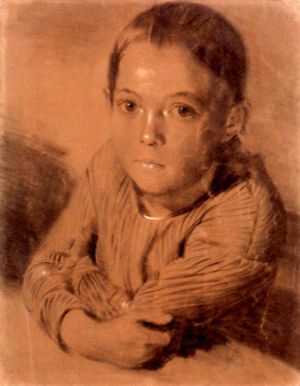Monochrome


In visual art, monochrome (Greek for "one color") means that only one color is used, in addition to black and/or white, and shades and tints of that color.
In many cases, black is used for the foreground color, for example charcoal in drawing. If the background of such a picture is white, the resulting picture is black-and-white, or greyscale. If the background is some other color (e.g. brown), the image is no longer black-and-white or greyscale, but it is still monochrome.
Alternatively, it is also possible to create a monochrome image by using an arbitrary foreground color on a white (or seldom, black) background. Generally, when used on white paper, dark colors are preferred to give a sufficient contrast, such as brown (sepia ink, vintage photography) or blue (e.g. cyanotype; see also blueprint).
Monochrome in painting
Camaïeu (also called en camaïeu) is a technique that employs two or three tints of a single color, other than gray, to create a monochromatic image without regard to local or realistic color. When a picture is monochromatically rendered in gray, it is called grisaille; when in yellow, cirage
How to create a monochrome image
An image, e.g. a photograph can be digitally tuned into monochrome by first converting it to greyscale and then applying a filter that changes the chrome, giving it the former grey tones a hue. There are many different ways to do that; with Photoshop, good results can be achieved using the Curves tool: this allows leaving the whites white and the blacks black, preserving the maximum contrast, and only alters the chrome of the greyscale shades in between.
- More information is available at [ Wikipedia:Monochrome ]
Chat rooms • What links here • Copyright info • Contact information • Category:Root